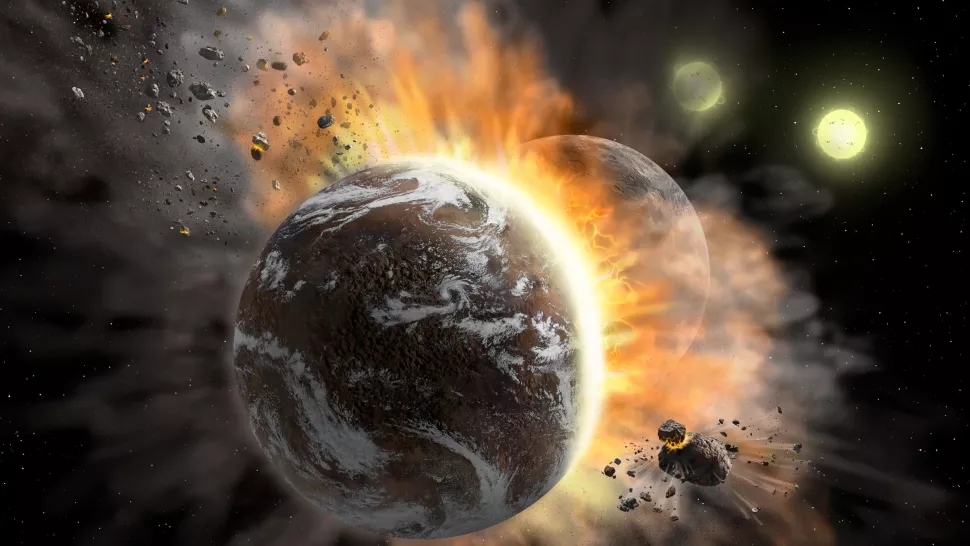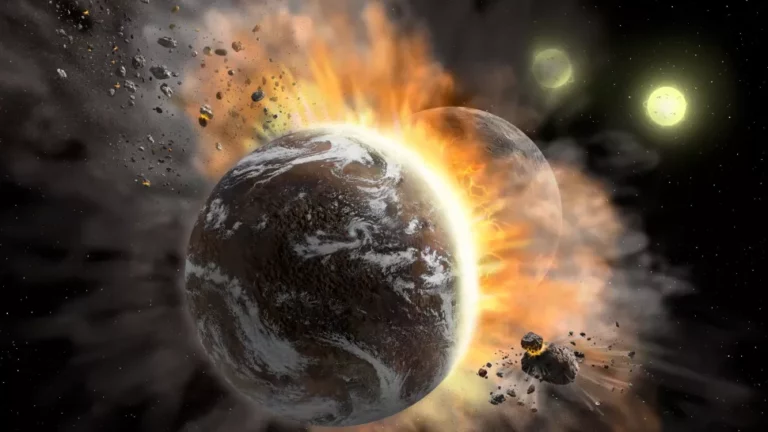Unpredictable Moons Could Be Wiping Out Extraterrestrial Life Throughout the Universe
Simulations show that collisions between moons and planets may be a regular danger for possible extraterrestrial life.
The notion of the moon colliding with Earth may seem like an unlikely doomsday scenario or a sci-fi catastrophe. However, for certain planets in other star systems, such catastrophic crashes may be commonplace. A recent study, published in the journal Monthly Notices of the Royal Astronomical Society, employs computer simulations to demonstrate that collisions between exoplanets and their moons (also known as exomoons) may be a regular event, with catastrophic consequences for any emerging extraterrestrial life on those planets. While astronomers have not yet detected any exomoons with certainty, experts anticipate that they are abundant in the cosmos.

According to Jonathan Brande, an astrophysicist at the University of Kansas who was not involved in the study, there are many moons in our own solar system, so it’s reasonable to expect moons in exoplanetary systems. As a result, researchers like Brad Hansen, an astronomer at the University of California, Los Angeles and the author of the new study, are investigating the interactions between exomoons and exoplanets and how these interactions could impact the likelihood of life in far-off star systems.
Runaway moons
The interactions between a planet and its moons are governed by gravity, resulting in tides and other effects. Earth’s moon, for instance, is gradually moving away from our planet and growing in orbit each year, while Earth spins more slowly due to the exchange of some of its angular momentum with the moon’s orbit. However, exomoons may have a different fate. Computer simulations conducted by Brad Hansen, an astronomer at the University of California, Los Angeles, indicate that collisions between exoplanets and their moons may be common, particularly around planets much closer to their stars than Earth is to the sun. Such collisions may occur within the first billion years of formation, and their resultant dust clouds glow in the infrared, lasting for only about 10,000 years. While NASA’s Wide-field Infrared Survey Explorer space telescope has observed only a dozen of these events, Hansen believes that every star will experience at least one such collision in its lifetime.
The role of exomoons in the evolution of exoplanets and their potential effects on alien life remain to be determined through further observations. Moons are typically believed to be helpful in stabilizing a planet’s axis and creating gentler seasons, but the collision scenario modeled in Hansen’s simulations would outweigh these benefits by destroying any chances for life.
Do not forget to share your opinion with us to provide you with the best posts !




0 Comments